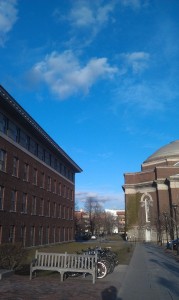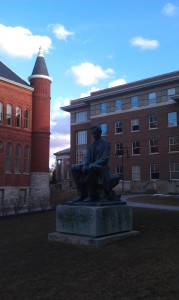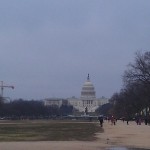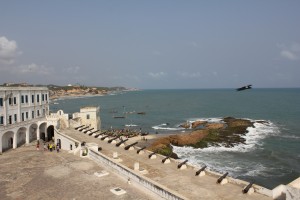The Maxwell School is known for its passionate and enthusiastic alumni. Some even refer to it as the Maxwell Mafia (yes, we have t-shirts) and are well-known in public policy spheres. Last weekend, about 70 students traveled to Washington, D.C. for the annual student networking trip. A majority of my classmates will spend most of their professional lives in the area.
Personally, I harbored a few doubts how helpful a networking trip would be for me, given that I just bumped my graduate date to more than a year away. But thanks to free housing from a generous alum, the decision to go was still relatively easy.
For Thursday and Friday, site visits were in order. My first stop was U.S. Agency for International Development’s Office of Foreign Disaster Assistance (OFDA). When natural disasters strike abroad, OFDA usually gets money to the field in 24-72 hours, often in the form of direct aid to organizations already on the ground such as the Red Cross. One of the jobs the alumni described would be a perfect fit for me as it is collecting and articulating information on disaster response worldwide. I was also impressed with the focus on disaster mitigation in addition to traditional rapid response.
Next stop was the U.S. Department of State. It was a question driven discussion and seven employees represented the foreign and civil service. One takeaway was when applying to the foreign service, apply for a cone you actually want rather than an “easier” one to get in. Otherwise, you must commence “conal rectification” which is as unpleasant as it sounds. Another takeaway was on the professional development side. State has only done large scale, professional training since Secretary Colin Powell and it is still very employee driven, meaning you have to ask. Ambassadors (including political appointees) receive only two weeks of formal training. Nicholas Kralev detailed it more last week.
The Maxwell networking happy hour was where I learned some of the more valuable information. I talked to several alumni who worked in the international development sector and learned a great deal about how to get in. It was great to meet a variety of alumni, from very recent graduates to mid-level professionals and even a handful at the peak of their careers.
On Friday, some students visited the ████████████████████████. After clearing security, a public affairs officer explained what students were seeing and allowed a tour of the ████████████. Students then spoke to two officers who briefly described their careers, current positions and answered students’ questions.
Later that evening, I attended a dinner with several alumni who were in the middle of their careers. It was more intimate and personal than the site visits allowed. There was more talk about what the alumni were working on and where they hoped to advance to next.
One of the most valuable parts of the entire trip were the breakout sessions on Saturday. My day began with a mock interview given by a recently retired alumni. I thought I interviewed fairly well but came away with a list of answers to spruce up and rewrite completely. There were several breakout sessions going on at once but I chose to attend the international organizations and international development session and federal government careers session. In the former, one alumni had not only ran an organization I am considering working for but actually turned it upside down, necessary for a successful turnaround. It was also great to hear from current federal employees and they had entered and advanced successfully through the system.
Seeing the Mafia in action was impressive all in itself and it was well worth the trip. With such a supportive group, I cannot wait to begin my career.




